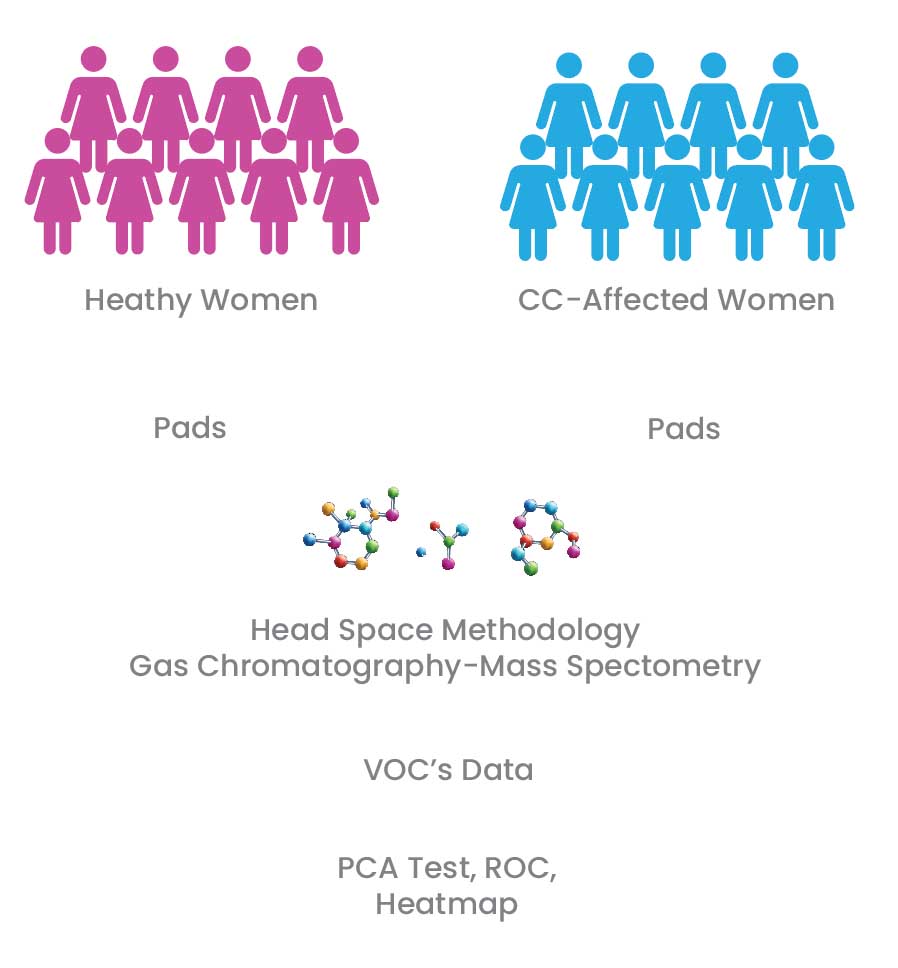Case Study
Volatolome of the Female Genitourinary Area: Toward the Metabolome of Cervical Cancer (Esquivel et at, 2018).
Background
Various Volatile Organic Compounds (VOCs) extracted from some human fluids (volatolome) has been reported as possible biomarkers for a several diseases including breast cancer. Presently, volatolomic profile data of the female genital area is rare.
Methods
To identify the VOCs associated with the female genitourinary area of healthy and Cervical Cancer (CC)-affected women used a pad, as a non-invasive instrument for sample collection was essential. Used pads were assessed by Gas Chromatography Mass Spectrometry. The data were exposed to Principal Component Analysis looking for a likely spectrum of VOCs which can aid in identifying CC-affected women. The diagnostic job of the VOCs was confirmed through Receiver Operating Characteristic (ROC) assessment.
Results
The data depicted huge differences between female healthy and cancer patients groups; most of these VOCs belonged to the alkanes chemical group. A group of VOCs were highlighted as common among CC patients, while others VOCs for healthy females.
The ROC curve demonstrated an optimum reach to diagnosis (89%), returning a 93% rate for specificity and sensitivity, representing the VOCs highlighted in the samples could distinguish cancer patients from healthy females.
Conclusions
In summary, we have detected and identified specific VOCs from healthy women that are not present in CC-affected females and VOCs specific of CC-affected women. We are strengthening our findings to aid in the detection of VOCs that are potential biomarkers for cervical tumors.
Exit Options
1
Initial Public Offering (IPO)
2
Potential Acquirer
Johnson & Johnson | Expands women’s health care
Abbot| Adds to current diagnostic business
Hologics | Protects current Imaging Business
ResMed | Compliments current business line
Siemens Healthcare | Protects current Imaging Business
Shimadzu | Protects current Imaging Business
Fuji | Protects current Imaging Business

